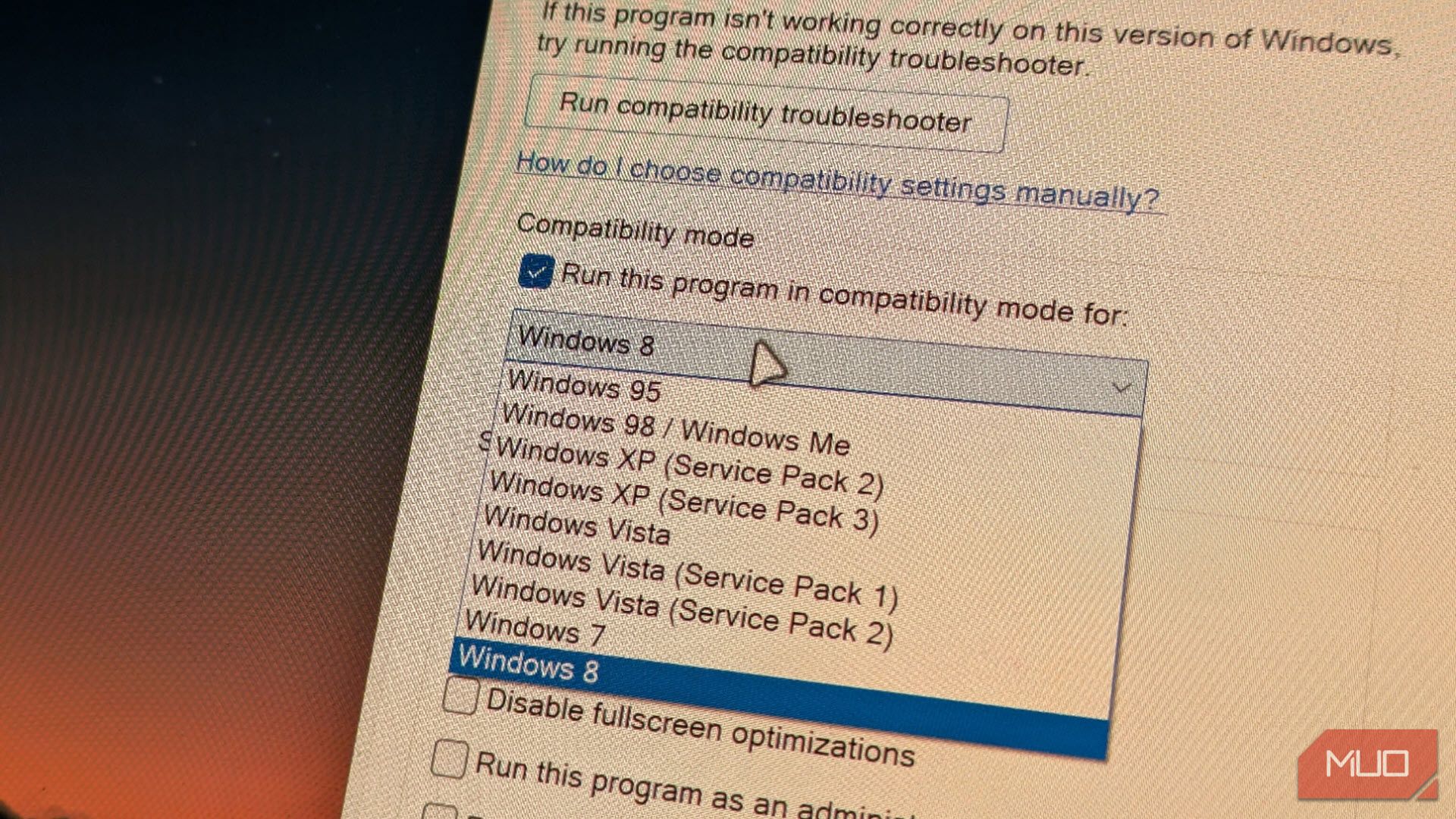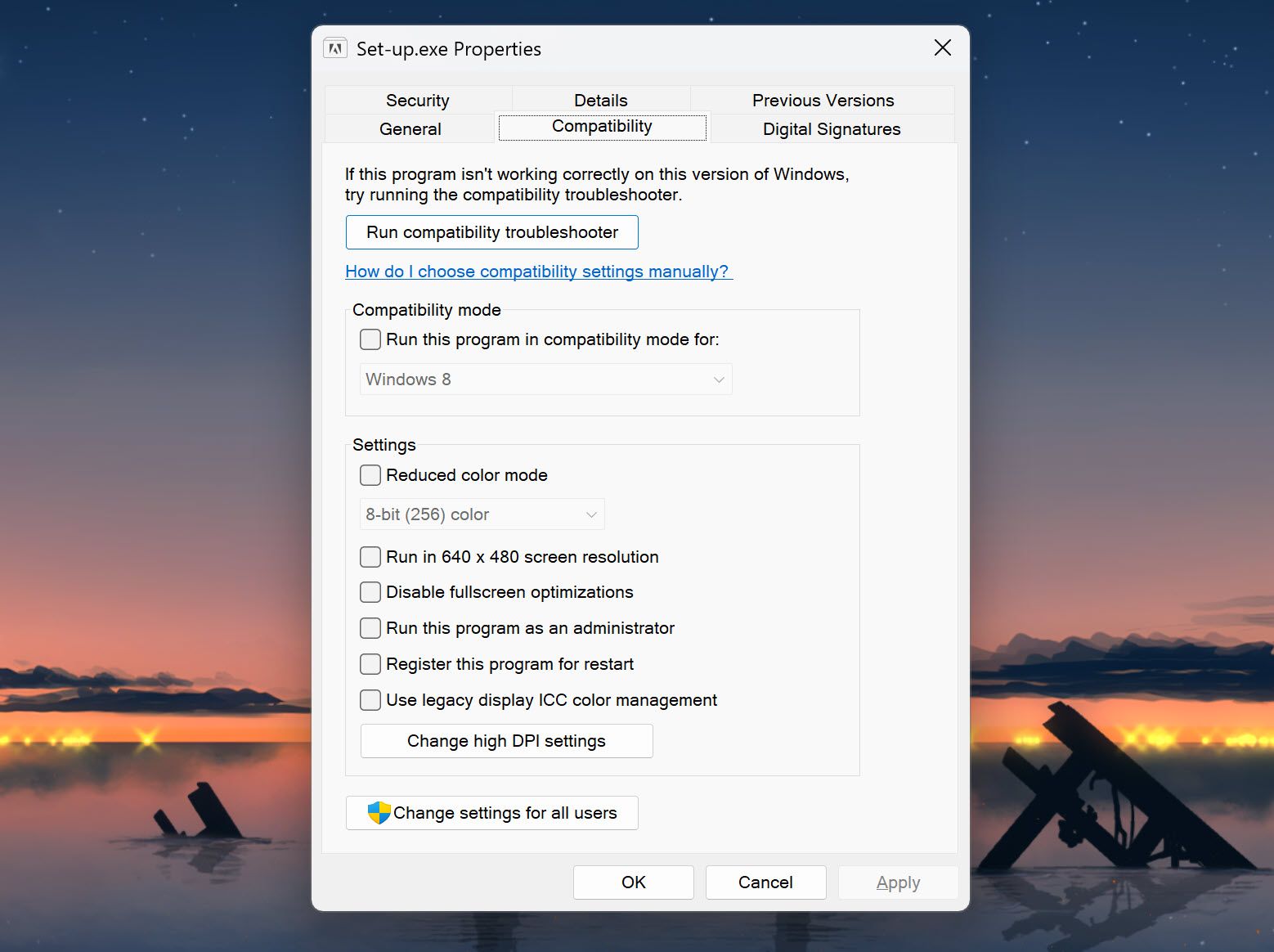Ever tried running an old program on Windows 11 and ended up with error codes you don’t understand? Thankfully, Windows has some compatibility settings that can help save the day.
What Does Compatibility Mode Do?
Applications designed for specific versions of Windows often check the installed operating system’s version. On newer versions of Windows, this version mismatch can often prevent older programs from running. This is where Compatibility mode comes in, as not every program is backward compatible, both in terms of hardware and software.

What Is Backward Compatibility in Hardware and Software?
Isn’t it just the best when your new hardware or software just works with the old?
At its core, Compatibility mode in Windows essentially tricks a program into believing it’s running on an older version of Windows. This lets legacy programs run properly on modern versions of Windows despite changes in system paths, libraries, file systems, APIs, and more.
There are several other compatibility features such as reduced color mode, disable full-screen optimizations, and use legacy ICC color management among others. It also enables some special folder paths that have stopped existing since Windows XP. For example, “Documents and Settings” became “Users” in Vista, while “Local Settings” and “Application Data” turned into “AppData/Local” and “AppData/Roaming.”

Keep in mind that the Compatibility mode will not fix fundamental incompatibilities. You won’t necessarily be able to run an old game or program from Windows XP on Windows 11 simply by changing the compatibility settings. There are still tons of APIs, hardware requirements, drivers, and more that have changed significantly as Windows evolved.
Luckily, using the Program Compatibility Troubleshooter can help identify a particular compatibility issue that you might be facing.
How to Use Compatibility Mode on Windows 11
To use Compatibility settings on Windows 11, simply follow these steps:
- Right-click the executable file of the program you want to run in Compatibility Mode and click Properties.
- Head over to the Compatibility tab.
- If you’re unsure which compatibility settings to use, run the Compatibility troubleshooter, which will automatically detect the best settings.
- Alternatively, select the OS you want to use for the program under the Compatibility mode dropdown.
- Adjust the other compatibility options below as required.

Compatibility mode can help you run certain older programs on modern versions of Windows. However, depending on the program you’re trying to run, there might still be incompatibilities that would require drivers or other third-party programs to fix.







